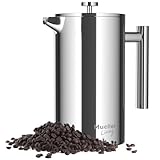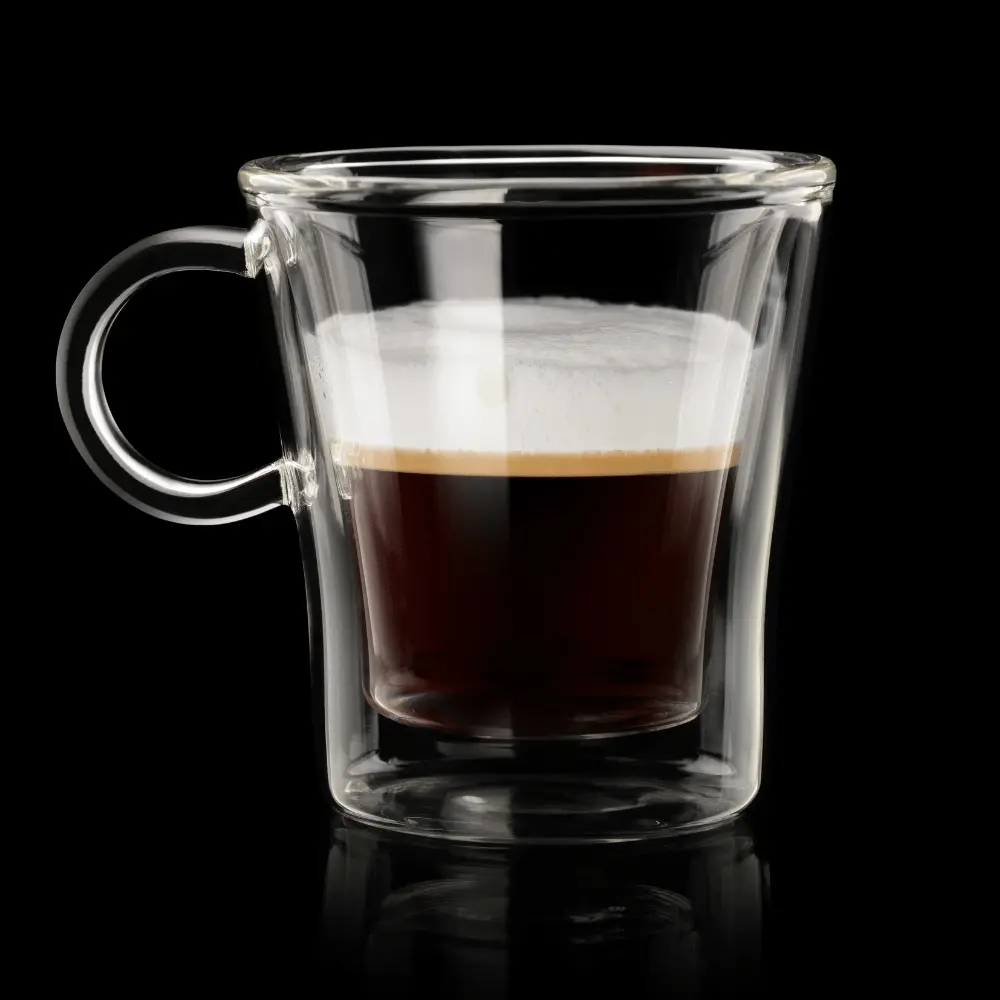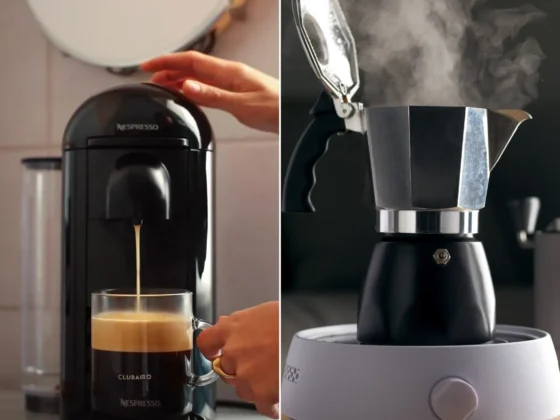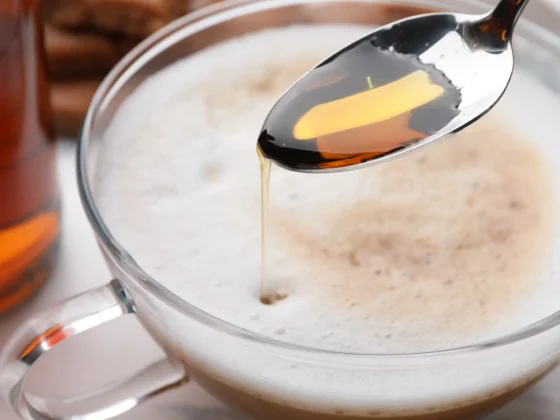Coffee enthusiasts are drawn to the intricate bouquet and multifaceted taste of a masterfully brewed cup of coffee. For those who relish a brighter, more nuanced coffee experience, trying the best light roast coffee is non-negotiable. But what, precisely, is light roast coffee? How does it diverge from other roasts, and what sets it apart? This exhaustive guide will scrutinize all you need to apprehend about this type of coffee, from the roasting method and flavor profile to brewing techniques, health merits, and beyond. Regardless of whether you’re a seasoned coffee aficionado or an inexperienced initiate to the realm of coffee, this guide will furnish you with the resources to explore the universe of this delectable coffee and the plethora of rewards it provides. Hence, seize your preferred coffee mug, and let’s delve into the intricacies of this distinctive type of coffee.
Light Roast Coffee – Key Takeaway
- Light roast coffee is recognized for its brilliant and nuanced flavor profile, highlighting delicate floral, fruity, and nutty notes, alongside a subtle aroma.
- This coffee is abundant in antioxidants, which can reduce the possibility of chronic diseases like type 2 diabetes, heart disease, and specific cancers.
- Preparing this particular coffee necessitates distinct techniques and water temperatures in contrast to other roasts.
- Opting for high-quality light roast coffee beans and preserving them appropriately can prolong their flavor and aroma.
- This distinct coffee delivers exclusive health benefits, such as boosting cognitive function and curbing the risk of chronic illnesses.
- Light and dark roast coffee exhibit distinct flavor and aroma profiles, and health benefits, emphasizing the importance of selecting the right roast according to personal preference.
- Exploring various coffee beans, brewing methods, and brands can facilitate coffee aficionados in discovering their ultimate cup of coffee.
What is Light Roast Coffee?
Light roast coffee is a coffee roast that has captured the hearts of many due to its light brown color, delicate flavor, and heightened acidity when compared to darker roasts. Its process involves roasting the beans at lower temperatures and for shorter durations than other roasts. This approach infuses a more subdued flavor profile and preserves the coffee bean’s original characteristics. In this section, we will delve into the light roast process, the unique characteristics of this variant, and some of its most popular beans.

The Light Roast Process
The light roast process commences with a meticulous selection of green coffee beans, which are then roasted for a shorter duration than other roasts, typically at temperatures between 350°F to 400°F (177°C to 204°C) for 7 to 10 minutes. This roasting approach retains the coffee bean’s natural flavor profile and acidity, culminating in a brighter and more nuanced taste. Moreover, it also preserves more caffeine than darker roasts, rendering it an excellent choice for those who yearn for an energizing cup of coffee. (1)
Light Roast Coffee Flavor Profile: What to Expect?
Coffee that is roasted lightly boasts a pale brown hue, dainty flavor, and heightened acidity when compared to its darker roasted counterparts. The flavor profile of this type of coffee distinguishes it from other roast types. Upon brewing light roast coffee, one can anticipate a subtle and complex flavor profile consisting of bright floral, fruity, and nutty notes. Below are some common flavors that one may experience when indulging in this coffee:
Floral: this particular roast typically contains floral notes, such as jasmine, lavender, and chamomile.
Fruity: The roast encompasses an array of fruity notes, such as citrus, berries, and tropical fruits.
Nutty: The roast type may also contain nutty notes, such as almonds, hazelnut, and walnut.
Sweet: A gentle sweetness, such as caramel or honey, may also be present in this coffee.
Chocolate: These particular coffee beans may feature chocolatey notes, such as dark chocolate or cocoa.

Due to its amplified acidity, coffee that is roasted lightly is also a frequently chosen option for cold brew and iced coffee beverages. It is crucial to keep in mind that the flavor profile can differ based on the origin and processing method of the coffee beans. Sampling various light roast coffee beans can aid in discovering preferred flavor profiles and brewing techniques.
Light Roast Coffee and Acidity: Is it Less Acidic than Other Roasts?
The intricate and multifarious world of coffee aficionados is one that is not without its share of contentious and vehemently disputed topics. Amongst these, the subject of acidity levels in varying coffee roasts stands out as an especially polarizing issue. It is widely believed amongst coffee connoisseurs that this type of coffee possesses the most pronounced acidity, while its dark roast counterpart boasts the lowest. (2)
It is pertinent to note that the tangy and tart taste of coffee owes its existence to the acids present in coffee beans. These acidic compounds are a crucial ingredient in determining the flavor profile of the resulting brew. The intricate interplay between the acidity and other elements such as sweetness and bitterness culminates in a delightful and harmonious symphony of taste.
The process of coffee roasting, involving the application of heat to the coffee beans, holds the key to the acidity levels in the resulting coffee. The duration and temperature of the roast are crucial determinants of the coffee’s acidity levels. The more prolonged and hotter the roast, the more subdued the acidity levels in the coffee.
To put it succinctly, the acidic content of coffee is a factor of paramount importance in the creation of an enjoyable and satisfying coffee-drinking experience. The acidity levels vary across different roasts, and a keen understanding of these nuances is essential for a true coffee aficionado.
Light Roast Coffee Pairings: What Foods Complement Its Flavor?
Pairing a light roast coffee with appropriate foods can lead to an elevated gustatory experience, resulting in a unique culinary adventure. Delicate and nuanced, the flavor profile of this kind of coffee is best paired with certain foods. Presented below are some suggestions for pairing this delectable coffee:

Pastries: This coffee meshes seamlessly with pastries like croissants, muffins, and scones.
Fresh fruit: The bright and fruity notes of this distinctive coffee go well with fresh fruits such as berries, citrus, and melons.
Light breakfast foods: It also forms a harmonious union with light breakfast items like oatmeal, yogurt, and granola.
Light snacks: To satisfy a light craving, experiment with pairing this coffee with nuts, popcorn, or dark chocolate.
Salads: The bright and floral notes of this kind of coffee can complement salads with light vinaigrettes or fruity dressings.
When determining the ideal food pairings for this specific type of coffee, it is essential to factor in the flavor profile of both the coffee and the food. Pairing different food with this delightful coffee can unearth fresh and invigorating flavor combinations.
The Art of Brewing Light Roast Coffee: Exploring Complex Tips and Techniques
Brewing a light roast coffee can be quite an interesting task, as it requires a slightly different approach compared to brewing darker roasts. Achieving the perfect cup of joe demands an understanding of the brewing methods, grind size, water temperature, and ratios. To unravel the complexities and explore the nuances of brewing this distinctive type of coffee, we delve into the realm of tips and techniques.
Unraveling the Brewing Methods for Light Roast Coffee
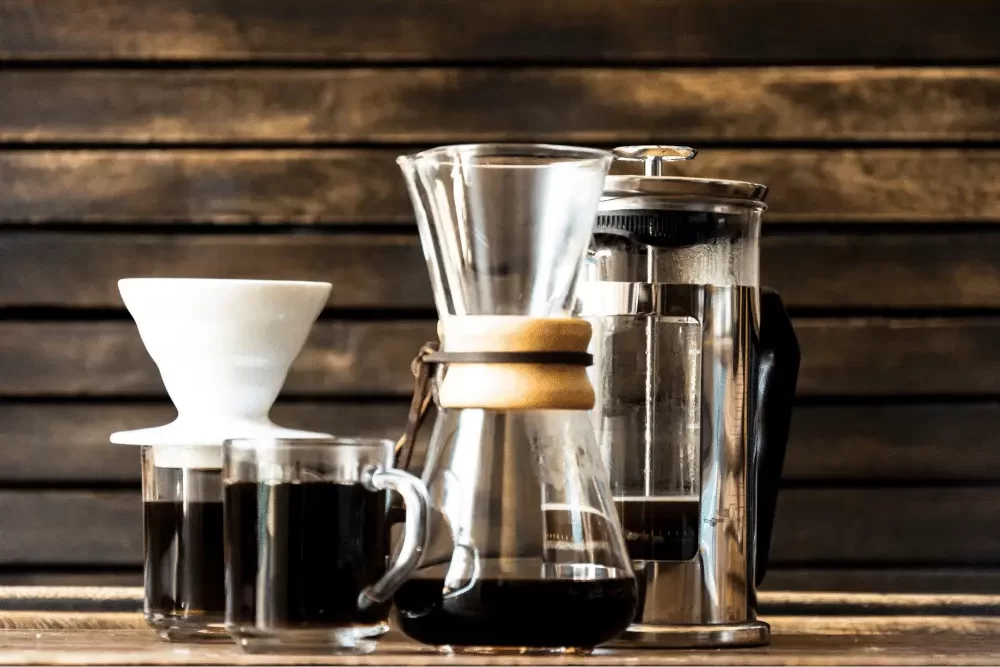
In the world of brewing light roast coffee, there exist several methods to choose from. These methods include drip brewing, pour-over, French press and espresso. Each method possesses its unique set of advantages and disadvantages, catering to the diverse personal preferences and brewing equipment of coffee aficionados. Let’s unveil the secrets behind some of the most popular brewing methods for this coffee.
Pour-Over: The Methodical and Precise Art of Coffee Brewing
For coffee enthusiasts seeking precision, pour-over is the go-to method. Pour-over entails pouring hot water over coffee grounds in a filter. The method allows for an intricately controlled brew that accentuates the coffee’s unique flavors and characteristics. Burstiness comes in the form of the variable water flow rate, which can be adjusted to suit the coffee’s characteristics.
French Press: Discovering the Rich and Full-Bodied Coffee Experience
In search of a more robust and full-flavored coffee? The French press coffee maker is your answer. This technique requires immersing coffee grounds in hot water and then pressing them through a mesh screen. The result is a full-bodied coffee with a substantial mouthfeel that can be further refined by experimenting with factors like water temperature and steeping duration.
Drip Brewing: The Convenient and Consistent Method
Drip brewing is the go-to method for many coffee lovers due to its convenience and consistency. The method involves hot water flowing through coffee grounds and a filter into a carafe. This brewing technique provides a uniform cup of coffee, with perplexity introduced in the form of varying water temperature, coffee grind size, and drip-rate.
Espresso: Unlocking the Bold and Concentrated Coffee Flavor
For those seeking a bold and concentrated coffee experience, espresso is the ultimate method. This brewing technique involves forcing hot water through finely-ground coffee under high pressure. It produces a thick crema layer on top of a concentrated and bold coffee, with perplexity introduced by the variable grind size, tamping pressure, and extraction time.
Overall, brewing this sort of coffee is an art that demands a deep understanding of brewing methods and the ability to vary the brewing variables to achieve the perfect cup. Whether you prefer the precision of pour-over, the full-bodied experience of the French press, the convenience of drip brewing, or the boldness of espresso, the key is to experiment with the variables to unlock the wonderful taste of this delectable coffee.
Grinding Light Roast Coffee Beans
The art of grinding light roast coffee beans necessitates the use of a medium-fine fine grind to ensure the coffee’s proper extraction without over-extraction. The utilization of a fine grind size contributes to a more regulated extraction, thereby enhancing the coffee’s delicate flavors and aromas. Notably, two types of grinders for this particular coffee are commonly used, including burr grinders and blade grinders. Although blade grinders are more affordable and suitable for sporadic usage, burr grinders are typically favored due to their ability to produce a consistent grind size and adjustability.
Water Temperature and Ratios for Light Roast Coffee
Water temperature and ratios play a pivotal role in the brewing process of light roast coffee. When it comes to brewing this type of coffee, a slightly lower brewing temperature than darker roasts is recommended, typically ranging from 195°F to 205°F (90°C to 96°C). Higher brewing temperatures can lead to a bitter taste and over-extraction. In addition to water temperature, it’s crucial to utilize the appropriate water-to-coffee ratio while the brewing process.
Nevertheless, experimenting with different ratios is essential to achieve the perfect balance of strength and flavor. (3)
Choosing Quality Light Roast Coffee Beans
To guarantee an exquisite sensory experience with your cup of joe, selecting premium-quality coffee beans is of paramount importance. When it comes to procuring light roast coffee beans, it is crucial to keep a sharp eye out for the following key criteria:

Freshness: It is crucial to obtain beans that have been roasted recently and come in packaging that has been sealed tightly, as this will ensure maximal freshness and potency in the final product.
Origin: Seeking out beans that originate from reputable regions and farms renowned for their excellent coffee cultivation practices is vital to obtain a top-tier product.
Roast date: One must inspect the date of roasting displayed on the packaging to guarantee that the beans are freshly roasted and thus of the highest quality.
How to Store Light Roast Coffee Beans
To preserve the superior quality of your coffee beans and prevent any flavor or aroma loss over time, it is imperative to store them appropriately. To achieve this goal, we suggest storing your light roast coffee beans in a container that is hermetically sealed, located in an environment that is cool, arid, and shielded from any direct exposure to sunlight, heat, or moisture. It is important to refrain from storing coffee beans in the refrigerator or freezer, as such storage options may lead to the accumulation of moisture, causing a deleterious impact on the taste and fragrance of your coffee.
Best Brands for Light Roast Coffee
While the market offers a plethora of light roast coffee brands, not all of them boast an equal degree of excellence. To aid in your pursuit of the finest experience, we have compiled a list of some of the best brands:
Blue Bottle Coffee: Renowned for its light roast coffee beans which exhibit a bright and fruity flavor profile.
- LIGHT AND BRIGHT BLEND: This 12 oz. bag of whole bean organic coffee is an uplifting light roast that’s the perfect mid-morning pick-me-up
- RADIANT, UPLIFTING FLAVORS: Roasted with a lighter hand, Bright brings tasting notes of blueberries, lemon zest and golden raisins. This unique coffee blend is luminous on its own, and pairs beautifully with milk or cream
- PREMIUM SPECIALTY COFFEE: Our Bright coffee blend is an ideal mid-morning pick-me-up and uses naturally processed, organic whole beans from East Africa, freshly roasted in small batches
- CERTIFIED ORGANIC: Our blends use highly traceable, certified organic coffee beans sustainably sourced from a select group of quality producers
- A RANGE OF TASTES: In addition to this light roast coffee, Blue Bottle Coffee offers a variety of blends to suit your taste and mood, including Bold, Balanced, Espresso and Decaf
Intelligentsia Coffee: Known for its impressive coffee beans, each exhibiting unique and intricate flavor profiles.
- Contains one (1) 12 Ounce Bag of Intelligentsia House Ground Coffee
- House: This roast is designed to showcase the intrinsic sweetness and lively fruit flavors that characterize our favorite coffees. Caramel and red apple are tastes we love in brighter blends and are presented here with high definition clarity
- Direct Trade: Our commitment to direct trade allows us to cut out unnecessary importers and exporters, and enables us to truly partner with our growers to bring you the sweetest coffees in the world
- How to Brew: We recommend starting with 6oz water for every 9.5g of coffee (about 2 tbsp), which provides excellent extraction and maximizes flavor. For our blends we suggest a pour over or a automatic drip brewer
- Seasonality: The components of our blends change throughout the year to incorporate new arrivals. We ensure freshness and optimize quality while the profiles remain consistent
- Contains six (6) Boxes of 10 Intelligentsia House Light Roast Coffee Keurig K-Cup Pods (60 K-Cup Pods Total) – 100% Arabica Coffee
- House K-Cups: This roast is designed to showcase the intrinsic sweetness and lively fruit flavors that characterize our favorite coffees. Milk chocolate, citrus, and apple are tastes we love and are presented here with high definition clarity
- Optimized for K-Cup format: We spent years in our quality control lab optimizing our coffee for the Keurig brewing system and pack more coffee into each k-cup. Compatible with all Keurig Brewers
- Recyclable: Intelligentsia K-Cup Pods are fully recyclable – peel, compost or dispose grounds & recycle. Check locally – Not recycled in many communities
- Direct Trade: Our commitment to direct trade allows us to cut out unnecessary importers and exporters, and enables us to truly partner with our growers to bring you the sweetest coffees in the world
Stumptown Coffee Roasters: Famed for its sweet and well-balanced coffee beans.
Verve Coffee Roasters: Provides an assortment of light roast coffee beans, each highlighting a bright and citrusy flavor note.
By making a conscious effort to select only the highest coffee beans quality and preserving them appropriately, you can indulge in a coffee experience that guarantees the most delightful flavor and aroma.
The Health Benefits of Light Roast Coffee

Coffee has long been hailed for its myriad of health benefits, and this distinctive type of coffee is no exception. In this segment, we will delve into the various health benefits that light roast coffee has to offer.
Antioxidant Properties of Light Roast Coffee
Light roast coffee is a plentiful source of antioxidants, which play a pivotal role in safeguarding the body from the detrimental effects of free radical damage. Antioxidants are essential for maintaining good overall health and reducing the likelihood of chronic diseases. This sort of coffee contains several antioxidants, including:
Chlorogenic acid: This particular antioxidant is found in abundance in coffee and has been shown to help in promoting weight loss. (4)
Caffeic acid: Another powerful antioxidant present in this particular coffee, with proven anti-inflammatory and anti-viral properties. (5)
Reduced Risk of Chronic Diseases
In addition to its rich antioxidant content, drinking this distinctive type of coffee has also been linked to a reduction in the risk of several chronic diseases. These include:
Type 2 diabetes: The high levels of antioxidants present in light roast coffee have been shown to enhance insulin sensitivity and glucose metabolism, thereby decreasing the likelihood of developing type 2 diabetes. (6)
Certain cancers: This coffee’s antioxidant properties have also been shown to have anti-cancer effects, thereby reducing the likelihood of developing certain types of cancer. (7)
Enhanced Cognitive Function
Consuming this particular coffee could potentially augment cognitive capacity and enhance mental acuity, owing to the caffeine content present in it. This element acts as a stimulant on the central nervous system, thereby resulting in better concentration, attention span, and mood elevation. On top of that, the antioxidants present in this kind of coffee could potentially shield the brain against oxidative stress and curtail the probability of cognitive decline associated with aging. (8)
To sum up, indulging in this delectable type of coffee can endow an array of health benefits, ranging from rich antioxidant properties, lowered probability of chronic illnesses, and escalated cognitive function. Integrating this coffee into your daily regimen can serve as an effortless and flavorsome technique to bolster your overall health and well-being.
Light Roast vs. Medium Roast: What’s the Difference?
When considering the beverage of coffee, it becomes evident that the roast level is a pivotal determinant impacting the flavor profile. Light roast coffee exhibits a refined and multifaceted flavor profile, featuring vivid floral, fruity, and nutty notes. In contrast, medium roast coffee presents a more substantial and well-balanced taste, showcasing tones of cocoa, caramel, and nuts. It’s worth noting that this type of coffee maintains the distinct attributes of its origin, whereas medium roast coffee possesses a more homogeneous flavor profile.

Light Roast vs. Dark Roast Coffee: Understanding the Differences
When it comes to coffee, two primary roasts exist light roast and dark roast. Despite their similar appearance, there are significant differences between the two roasts, including flavor, and health benefits. In this section, we will delve into the nuances of these two roast types.
A Flavor and Aroma Comparison
The most noticeable distinction between light roast and dark roast coffee is the difference in their flavor and aroma profile. Light roast coffee exhibits a bright and nuanced flavor, with subtle floral, fruity, and nutty notes. In contrast, dark roast coffee offers a bolder and more intense flavor, with a smoky and caramelized taste and a bitter aftertaste. Furthermore, the aroma profile of this sort of coffee is generally more subtle and floral, while dark roast coffee offers a more pungent and earthy aroma.
A Comparison of Health Benefits
Both light roast and dark roast coffee provide numerous health benefits due to their antioxidant properties and caffeine content. However, there are slight variations in the health benefits of each roast. Light roast coffee is known for its high antioxidant properties, which can aid in reducing the risk of chronic diseases such as type 2 diabetes, heart disease, and certain cancers. In contrast, dark roast coffee may provide additional benefits by decreasing inflammation and guarding against liver damage.
Conclusion
In conclusion, this particular type of coffee is an immensely popular option among coffee enthusiasts who relish its intricate and subtle flavor notes, higher caffeine concentration, and a multitude of health advantages. Regardless of whether you’re a coffee connoisseur or a casual drinker, comprehending the light roast coffee production process, brewing methods, and health benefits can empower you to make informed decisions about your coffee preferences. From selecting the appropriate beans to correctly storing them and brewing the ideal cup, this comprehensive guide has covered all the necessary details about this delectable type of coffee. We trust that this guide has stimulated your curiosity to try out new light roast coffee beans and experiment with various brewing techniques to find your ideal cup of coffee.
FAQ
How Should I Brew Light Roast Coffee?
Brewing this coffee requires different techniques and water temperatures compared to other roasts. It's best to use a pour-over method, French press, or drip coffee maker and use water that is between 195-205°F to extract the delicate flavor notes.
What Should I Consider When Buying Light Roast Coffee?
When purchasing this type of coffee, consider the roast date, origin, and freshness. Look for recently roasted beans packaged in airtight bags to ensure maximum freshness. Also, choose beans sourced from reputable regions and farms known for producing high-quality coffee.
What Are the Health Benefits of Drinking Light Roast Coffee?
This distinctive sort of coffee provides various health benefits, such as high antioxidant content, reduced risk of chronic diseases such as type 2 diabetes, heart disease, and certain cancers, and improved cognitive function. The caffeine content in this coffee stimulates the central nervous system, improving focus, attention, and mood.












